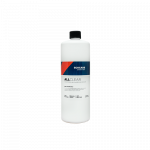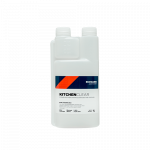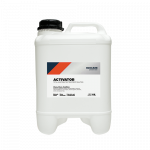Like any drainage or sewerage system, septic and AWTS systems can get blocked. Septic blockages are frustrating and can end up being costly if they’re left unattended and require physical intervention. However, they can easily be prevented with simple maintenance and care with the way you use them.
It helps to think of your wastewater system as comprising two sections. The first section consists of your sinks, toilets and the drain pipes they’re connected to. The second section consists of your septic or AWTS tank(s), chambers and drainage fields or trenches.
What causes septic blockages
In drains, blockages are commonly caused by foreign objects such as sanitary wipes, cotton buds and plastic wrappers; by hair that binds with dirt or grease and fats that congeal around waste and form a clog.
Blockages further down the system in the septic or AWTS tank or in the leach drain are most commonly caused by insufficient bacteria which results in poor digestion. If waste isn’t being digested effectively, it builds up in the tank and can block the baffles or pipes in the tank or it can pass through into the leach drain and cause a blockage.
Tree roots are also a possible cause for system blockages as the roots can break through pipes and restrict the flow of waste.
How to prevent septic blockages
The most important step in preventing blockages in your drains is not to throw anything other than biological waste into your toilet.
To keep your septic or AWTS tank and leach drain free from blockages the best way is to maintain the optimal biological conditions for bacteria to thrive and waste digestion to take place with a treatment product like EcoCare Activator.
One of the easiest ways to prevent damage to your septic system’s bacteria and digestive function is to stop using conventional chemical based household cleaning products. These types of cleaners contain harsh chemicals that are intended to kill bacteria and will do so in your tank. Septic smart household cleaners like the EcoShield range will clean dirt and grime without harming your bacteria.
What to do if your septic is blocked
The first thing to do is to figure out whether the blockage is in your drains or in your septic system itself. You can determine this by checking whether drainage is blocked in one drain, toilet or sink or whether there are a few that are blocked. If only one inlet appears to be blocked you likely have a blockage in your drain, but if a few are blocked the blockage is more likely in your septic or AWTS.
For a blockage in a drain you can use All Clear or Kitchen Clear. All Clear is a septic safe drain unblocker that works for all household drains whereas Kitchen Clear is a septic safe solution for blockages in your kitchen drains. Kitchen drains require a slightly different formula because the blockages are likely caused by fats, oils and grease which require specialty bacteria. It’s very important to only use drain cleaners that won’t kill your bacteria if you’re on a septic or AWTS..
If you’ve determined that your blockage is in your septic or AWTS the quickest and most reliable way to get your system running smoothly is to boost your bacterial populations and restore the optimal biological conditions. EcoCare Activator’s readily biodegradable surfactants will dislodge and dissolve blockages, the biological stimulants will boost bacteria which will produce the enzymes to break up the waste and then digest it.




